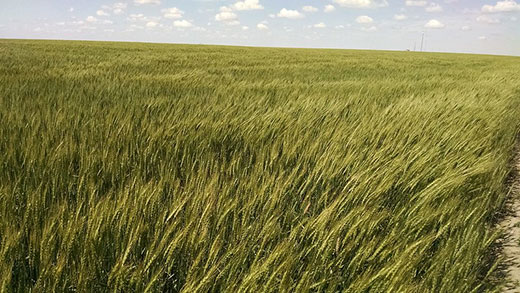Several years ago the Kansas Corn Commission provided funds to the U.S. Grains Council for beginning the promotion to and education of starch processors around the world about higher starch content of U.S. Corn. Implementing several strategic steps, the USGC team gathered samples of corn from competitors around the world and established a test case with a Middle Eastern processor to show how productive U.S. Corn is compared to supplies from other international competitors. With experts from the University of Illinois providing the technical evaluation and presentations, the USGC team knew it had good news to share.
Originally there was a meeting for international starch processors planned for June 2022 to be held in Illinois in conjunction with NCGA’s Corn Utilization Conference. Unfortunately the CUTC was cancelled. But that actually created a silver lining when USGC staff decided to offer a conference in Adana, Turkey for starch processors in the region. It was to be a technical conference along with a tour of a local starch processing facility. But word was spreading quickly about the very positive results of the USGC study and starch processors from around the world quickly filled the conference to its capacity.
USGC staff from the region and around the globe, Illinois Corn and Kansas Corn all provided support during the conference to help make it a success. This meeting – with its excellent agenda, speakers and active discussion among the participants made it one of the very best events that I have ever attended. Kudos to the USGC team and much thanks to the participants who recognized the fabulous expertise and resource of the speakers. This starch industry appears to be greatly seeking optimization and feedstock quality to enhance productivity and profitability. This conference provided all of those and more! There are other starch processors around the world especially in Asia that may benefit from a similar program in the future and discussions are underway of how to create the next similar event. It was my privilege to see all of this in action and the successful results that occurred.
Council Conference Highlights the Superior Performance of U.S. Corn
The Council hosted a Global Corn Starch conference last week in Adana, Turkey, to present the results of an ongoing research project that demonstrated that U.S. corn gives industrial starch processors higher starch yields than corn from other origins. The higher yields have the potential to increase overall plant profitability and translate into millions of dollars of additional income per year.
Thirty representatives from ten countries participated in the conference. Ramy Taieb, regional director for the Middle East, Africa, and Europe, stated, “the participants heard not only about the higher levels of extractible starch in U.S. corn which translates directly into increased profitability. But they also learned that the processing time for U.S. corn is half that of other origins, which means that plants are able to process double the volume of U.S. corn versus other origins. This translates into the potential to double overall annual plant throughput. Finally, the consistency and uniformity of U.S. corn cause less operational disruption than other origins. All of these reasons overwhelming favor U.S. corn as the origin of preference.”
Dr. Vijay Sigh, Executive Director, Integrated Bioprocessing Research Laboratory at the University of Illinois, Urbana-Champaign, conducted the study with the help of the U.S. Grains Council. Over the past two years, corn samples from the U.S., Argentina, Brazil, Ukraine, and India were taken from the warehouses of six industrial starch processors located in Asia, Latin America, India, and the Mediterranean. The corn samples were shipped to the University of Illinois for analysis. The results showed that U.S. corn yielded 2-4% higher extractible starch than other origins.
“The likely reason for these higher starch extractability levels in U.S. corn is due to the corn hybrids produced here, which affect the ‘mill-ability’ of the grain,” said Greg Krissek, CEO of the Kansas Corn Commission. “The starch is more readily available than the harder endosperm hybrids in South America. Typically, buyers focus on the BCFM levels in U.S. corn, but this study shows that even when you account for the BCFM levels in U.S. corn, it still outperforms other origins and actually increases the overall profitability of the plant. If processors want to optimize their plant’s performance, they need to be using U.S. corn.”
“There are 49 industrial starch plants located outside the United States,” said Collin Watters, director of Exports and Logistics at the Illinois Corn Marketing Board. “Those that rely on corn imports to fill their needs should be choosing U.S. corn over other origins. If they aren’t, they are leaving money on the table and passing up an opportunity for improving their plant’s overall profitability.”
To put this into perspective, a wet milling plant with a capacity of 1,000 MT (40,000 bushels) of corn per day could expect roughly $6.5 million to $9 million a year in additional revenue if it were to use U.S. corn. This could increase further as the capacity of the plant could be expanded by the shorter processing time required for U.S. corn versus other origins.
“The Council appreciates the financial support and leadership provided by the Illinois Corn Marketing Board and the Kansas Corn Commission,” said Kurt Shultz, Senior Director of Global Strategies. “Their support made this study and the conference in Adana possible. The information presented certainly highlights the competitive advantage of buying U.S. corn and why it should be the origin of preference for any international starch plant.”
_ _ _
Photo by Bradyn Shock on Unsplash



